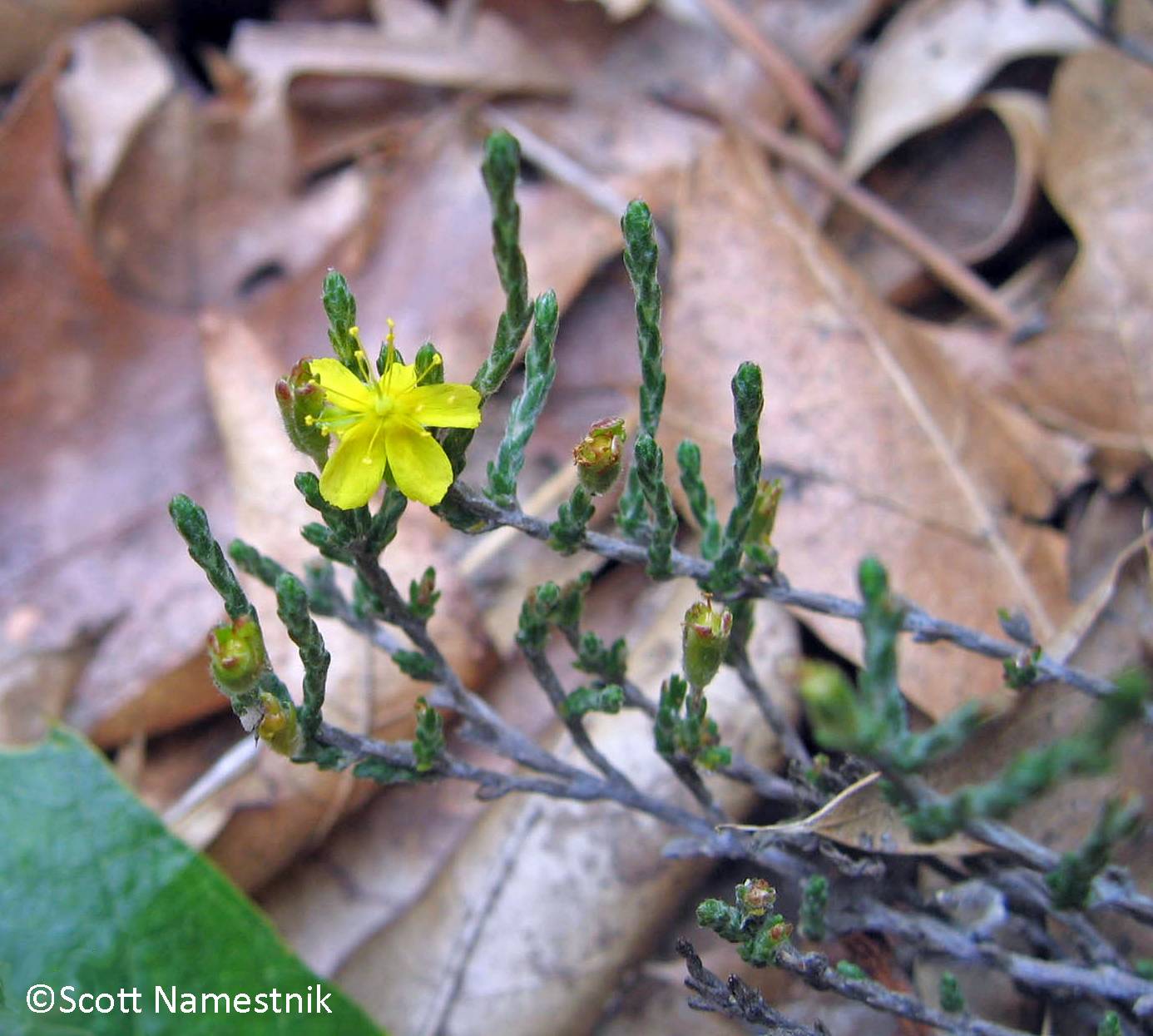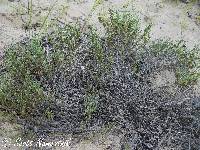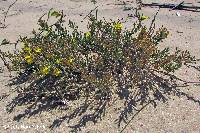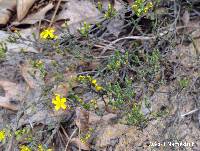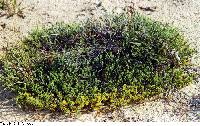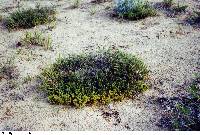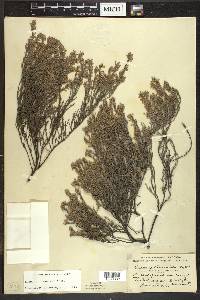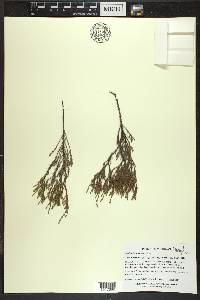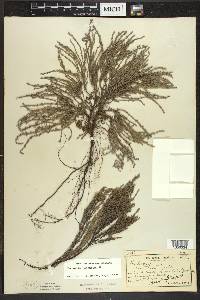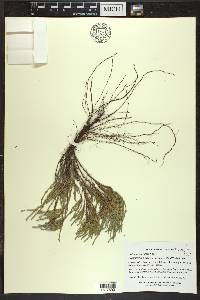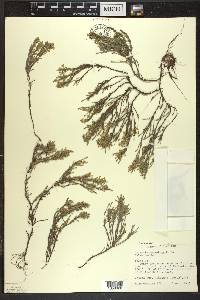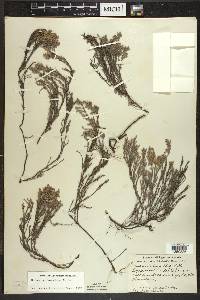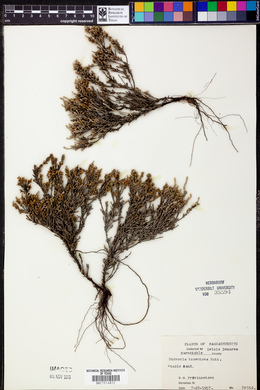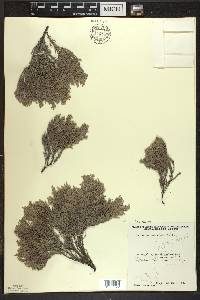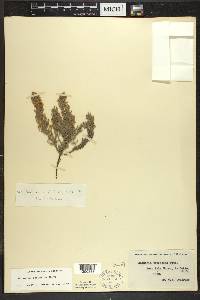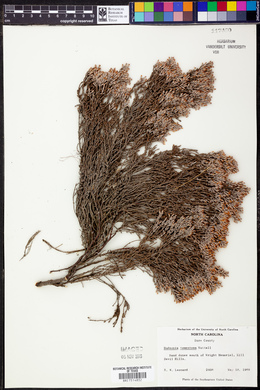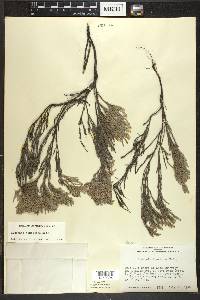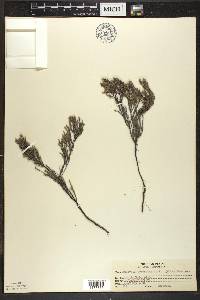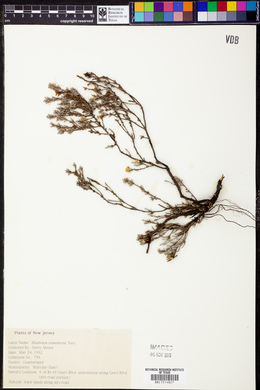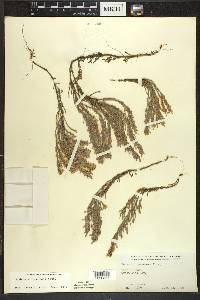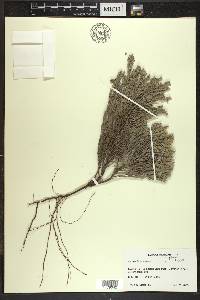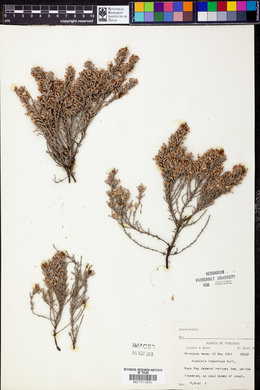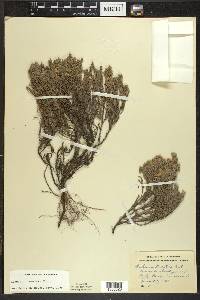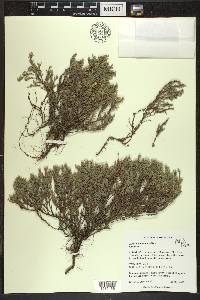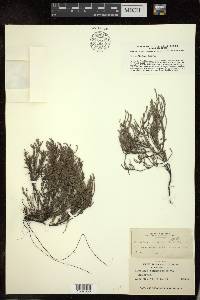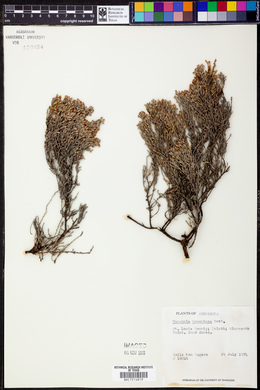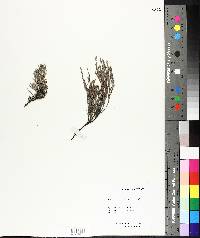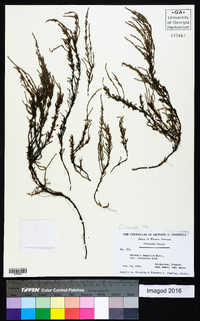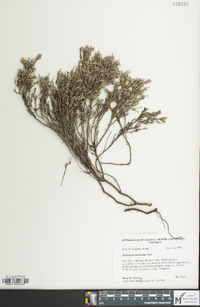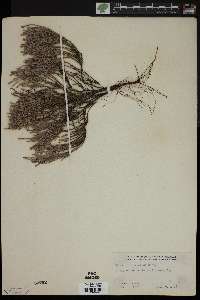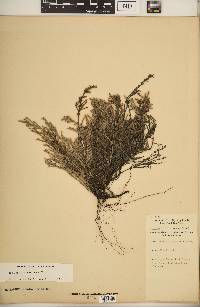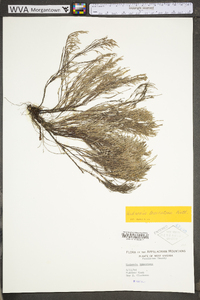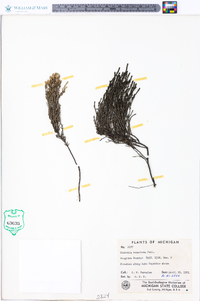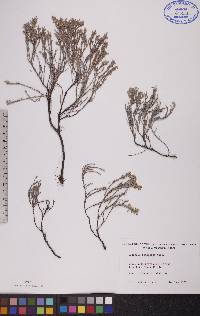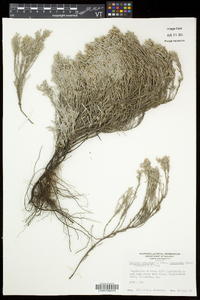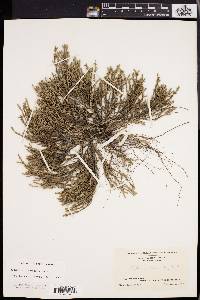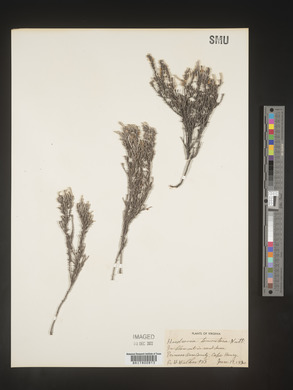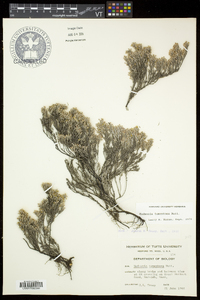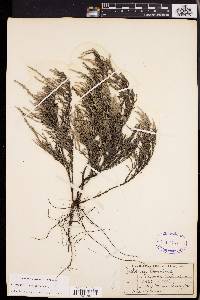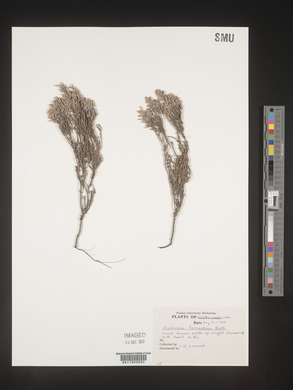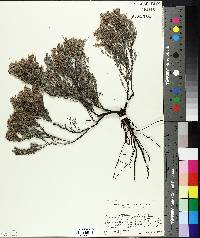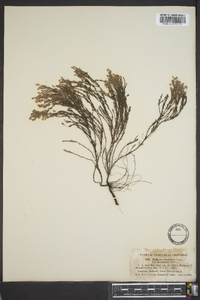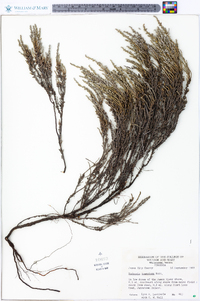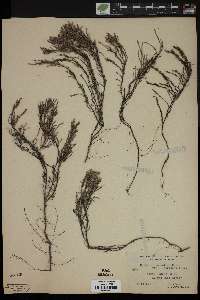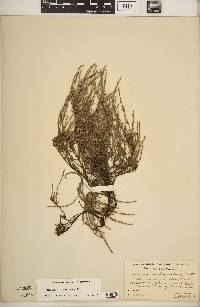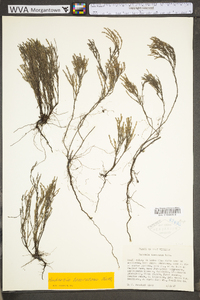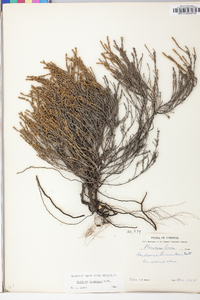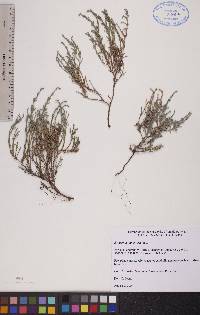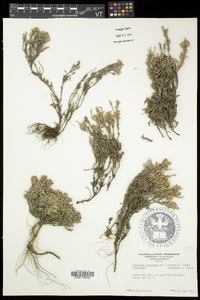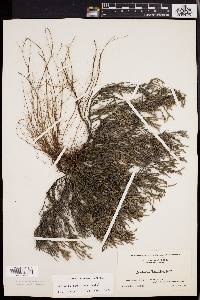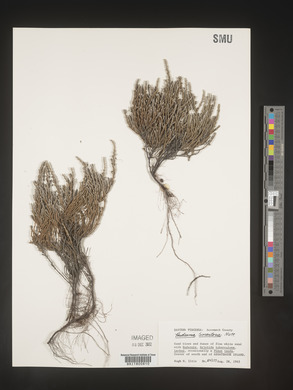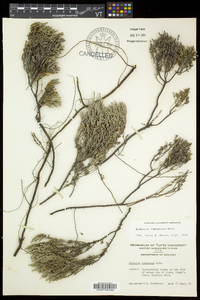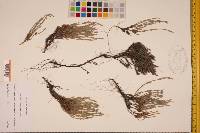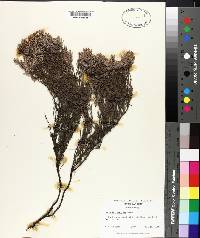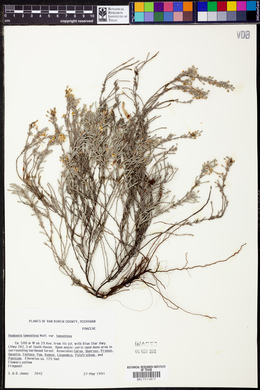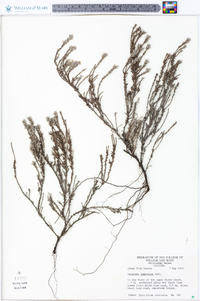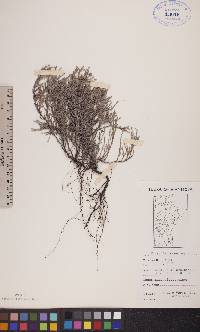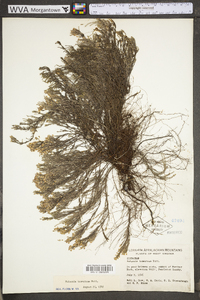Hudsonia tomentosa
|
|
|
|
Family: Cistaceae
Sand Golden-Heather, more...sand-heather, woolly beachheather
|
Perennial shrub or subshrub 5 - 20 cm tall, up to 1 m across Leaves: numerous, alternate, closely overlapping, appressed, stalkless, non-toothed, very small (1 - 3 mm long), scale-like, pointed egg-shaped or triangular, golden or green, with grayish white covering of dense, appressed, matted, white hairs. Flowers: many, single in upper leaf axils, very short-stalked, yellow, showy though quite small (3 - 6 mm broad, 3 - 5 mm tall), radially symmetric, with five, spreading or flaring lobes. Sepals: five, but in two series with outer two each fused to an inner one for about half their length, then separating into slightly spreading tips. The calyx as a whole is about 2 - 3 mm long, and is densely covered with appressed hairs. Petals: five, twisted in bud, then spreading or flaring, yellow, somewhat oblong or inversely egg-shaped, fairly straight or slightly rounded-convex along broad outer edge. The petals can fall off early (before fruit starts to mature) or instead dry up and remain attached. Stamens: eight to twenty, with distinct and slender filaments, overall slightly shorter than style, but extending beyond petals and obviously visible. Pistil: with one, single-chambered, superior ovary; one, slender, about 2 mm long style; and a minute, terminal stigma. Fruit: short-stalked, one- to three-seeded, single-chambered, 2 mm tall, cylindric capsules enclosed by erect, twisted, persistent sepals. Stems: low-ascending, much branched, forming dense mats or short mounds, brown at base, and becoming gray along branches and twigs due to dense covering of appressed, white hairs. Similar species: Hudsonia tomentosa is quite different from other members of the Cistaceae family in the Chicago Region since it is a low, shrubby, mat-forming plant with tightly appressed, overlapping, scale-like leaves. In far eastern North America there is another species, H. ericoides, which can be distinguished by having spreading, needle-like, over 3 mm long leaves; it is less hairy throughout and thus green, not grayish; the flower stalks are longer (at least 0.5 cm); and the petals have narrowed, somewhat pointed tips. Sometimes our plants will have more spreading leaves, and some have separated that form as H. tomentosa var. intermedia, however most authorities believe this leaf character (spreading vs. appressed) is a result of environmental conditions and varies with the vigor of the plants. At a very quick glance, this species could be confused with two of our juniper species, Juniperus communis or J. horizontalis, but neither of those plants ever produce flowers. In addition, J. horizontalis does not occur in the same range (or even state) as H. tomentosa. Flowering: May to August Habitat and ecology: Not very common, found naturally only in select areas of the dune region in Indiana and Berrien county, Michigan. Normally in areas of disturbance, such as blowouts, where there is open sand, but mostly on older dune ridges with scattered oak and Juniper shrubs rather than the active dunes close to Lake Michigan. Occurence in the Chicago region: native Notes: This plant is often mistaken for a low Juniper shrub if not examined closely. Once the tiny yellow flowers are noticed, it becomes obvious that this is not a member of the gymnosperms (non-flowering plants). The common name "false heather" is appropriate since this species very closely resembles the overall form and foliage coloration of heather, except heather has purplish flowers and is very different in its floral anatomy since it is in the blueberry family (Ericaceae). North of the Chicago Region along Lake Superior, H. tomentosa is often found right behind the rocky shores where it binds sand into little mounds around its base. Even in the Chicago Region, it tolerates fairly harsh conditions being on open areas in the hot sun and shifting sands. The low stature of the plant, the tightly appressed leaves, and the dense covering of reflective hairs all help keep water loss to a minimum. Author: The Field Museum Lvs lance-ovate or triangular, ±scale-like, 1-3 mm, closely imbricate and appressed to the twigs except on vigorous shoots, densely white-tomentose (less so on vigorous shoots); pedicels to 3 mm; frs cylindric, promptly deciduous; 2n=20. Locally abundant on and about coastal dunes from Me. to N.C., and inland in sandy habitats from Lab. and N.E. to W.Va., w. to Wis., Minn., Man., and s. Mack. May-July. A hybrid with no. 1 [Hudsonia ericoides L.] is H. سpectabilis Morse. The names H. intermedia and H. tomentosa var. intermedia, sometimes misapplied to the hybrid, are based on specimens of H. tomentosa from the Adirondack Mts. Gleason, Henry A. & Cronquist, Arthur J. 1991. Manual of vascular plants of northeastern United States and adjacent Canada. lxxv + 910 pp. ©The New York Botanical Garden. All rights reserved. Used by permission. From Flora of Indiana (1940) by Charles C. Deam Indiana Coefficient of Conservatism: C = 10 Wetland Indicator Status: N/A |

